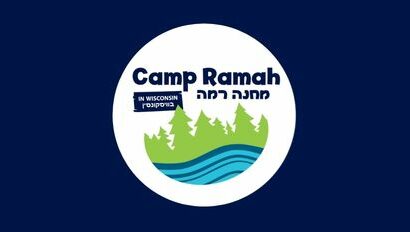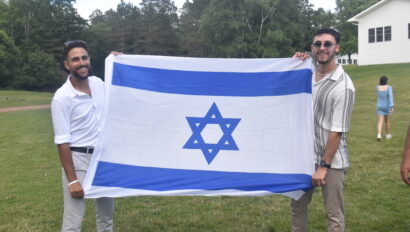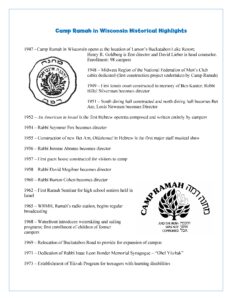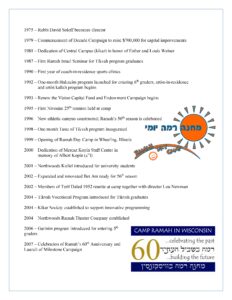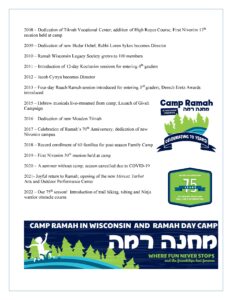Parashat Shemini/Parah
Well, its that time of year again, when it’s obvious that Pesach is coming soon. Grocery stores around the country have begun the process of stocking up on matzah, gefilte fish, sparkling grape juice, and kosher l’Pesach Coca Cola. The displays, sales, and advertisements serve as another reminder that we need to start preparing our homes for Pesach and prepare our menus for the sedarim.
This week’s parashah, Shemini, which among other topics contains a list of kosher animals and principles for kashrut, is augmented by its proximity to Pesach by becoming Parashat Parah. In the special additional reading (maftir) this week, we are reminded about the ritual of the Parah Adumah, the red heifer. This puzzling and mysterious rite served as the ritual purification par excellence, and the level of purity it achieved was mandatory before giving the Passover offering. However, since in a post-temple world we cannot actually fulfill the ritual of the red heifer or the Passover sacrifice, we study them to spiritually fulfill them. The reading of the special maftir serves both the purpose of bringing us to a state of greater purity, as well as serving as a big reminder that Pesach is coming up and that we have lots of preparation still to do.
While the maftir is concerned with a particularly red cow, a sizeable chunk of the parashah is focused on regular cows, and more specifically the basic laws of kosher animals. While statutes about the splitted-ness of hooves are obviously important, the lists and laws can feel tedious. Whenever I come across a set of laws in Judaism that appear exacting and stale, I am reminded of a great friend and teacher who once explained that, “once you are familiar with the laws and rules, a practice can become more meaningful.” As we begin to learn and do more, especially in the way of observance, we bring a powerful level of intentionality to our lives. In Judaism we are incredibly intentional about everything we do, whether it is preparing for a huge feast, a powerful religious experience, or sitting down at the breakfast table.
The camp kitchen prepares over two thousand meals a day, and in a regular cafeteria environment that might just translate to a vast quantity of food. At Ramah we learn that knowledge of meals as our source of nourishment is necessary, but it is certainly not sufficient. Fun, friendships, and Jewish meaning are side dishes and entrees at every meal. We begin every meal with thanks to God for providing us with the means and ability to eat surrounded by community, and we end each meal in joyous and thankful song. Through the laws of kashrut we are taught that a meal is not just a meal, but also a way of bringing intentionality and connection to God and our Jewish community into our lives. And through the laws of the parah adumah, we are taught the value of looking ahead, spring-cleaning, and preparing for the communal experiences that bring great meaning into our lives.
In the aftermath of Purim and the run-up to Pesach, between the experiences of the festive Purim meal (se’udah) and the Seder, it is easy to get stuck in that classic Jewish cliché of “they tried to kill us, we won: let’s eat.” Our experiences at Ramah, however, help us see the value of every meal – the physical nourishment provided by God and the spiritual nourishment of being surrounded by friends. This knowledge helps enrich those moments during the year, like Purim and Pesach, when the value of the food and experience of the meal itself might be overlooked by the celebrations of historical victories. Our memories of those near-holy moments in the chadar ochel (dining hall) at Ramah help us realize the importance of communal meals, even if we are privileged to enjoy them on many “normal” days, not just holidays.
This week’s parashah, Shemini, which among other topics contains a list of kosher animals and principles for kashrut, is augmented by its proximity to Pesach by becoming Parashat Parah. In the special additional reading (maftir) this week, we are reminded about the ritual of the Parah Adumah, the red heifer. This puzzling and mysterious rite served as the ritual purification par excellence, and the level of purity it achieved was mandatory before giving the Passover offering. However, since in a post-temple world we cannot actually fulfill the ritual of the red heifer or the Passover sacrifice, we study them to spiritually fulfill them. The reading of the special maftir serves both the purpose of bringing us to a state of greater purity, as well as serving as a big reminder that Pesach is coming up and that we have lots of preparation still to do.
While the maftir is concerned with a particularly red cow, a sizeable chunk of the parashah is focused on regular cows, and more specifically the basic laws of kosher animals. While statutes about the splitted-ness of hooves are obviously important, the lists and laws can feel tedious. Whenever I come across a set of laws in Judaism that appear exacting and stale, I am reminded of a great friend and teacher who once explained that, “once you are familiar with the laws and rules, a practice can become more meaningful.” As we begin to learn and do more, especially in the way of observance, we bring a powerful level of intentionality to our lives. In Judaism we are incredibly intentional about everything we do, whether it is preparing for a huge feast, a powerful religious experience, or sitting down at the breakfast table.
The camp kitchen prepares over two thousand meals a day, and in a regular cafeteria environment that might just translate to a vast quantity of food. At Ramah we learn that knowledge of meals as our source of nourishment is necessary, but it is certainly not sufficient. Fun, friendships, and Jewish meaning are side dishes and entrees at every meal. We begin every meal with thanks to God for providing us with the means and ability to eat surrounded by community, and we end each meal in joyous and thankful song. Through the laws of kashrut we are taught that a meal is not just a meal, but also a way of bringing intentionality and connection to God and our Jewish community into our lives. And through the laws of the parah adumah, we are taught the value of looking ahead, spring-cleaning, and preparing for the communal experiences that bring great meaning into our lives.
In the aftermath of Purim and the run-up to Pesach, between the experiences of the festive Purim meal (se’udah) and the Seder, it is easy to get stuck in that classic Jewish cliché of “they tried to kill us, we won: let’s eat.” Our experiences at Ramah, however, help us see the value of every meal – the physical nourishment provided by God and the spiritual nourishment of being surrounded by friends. This knowledge helps enrich those moments during the year, like Purim and Pesach, when the value of the food and experience of the meal itself might be overlooked by the celebrations of historical victories. Our memories of those near-holy moments in the chadar ochel (dining hall) at Ramah help us realize the importance of communal meals, even if we are privileged to enjoy them on many “normal” days, not just holidays.
